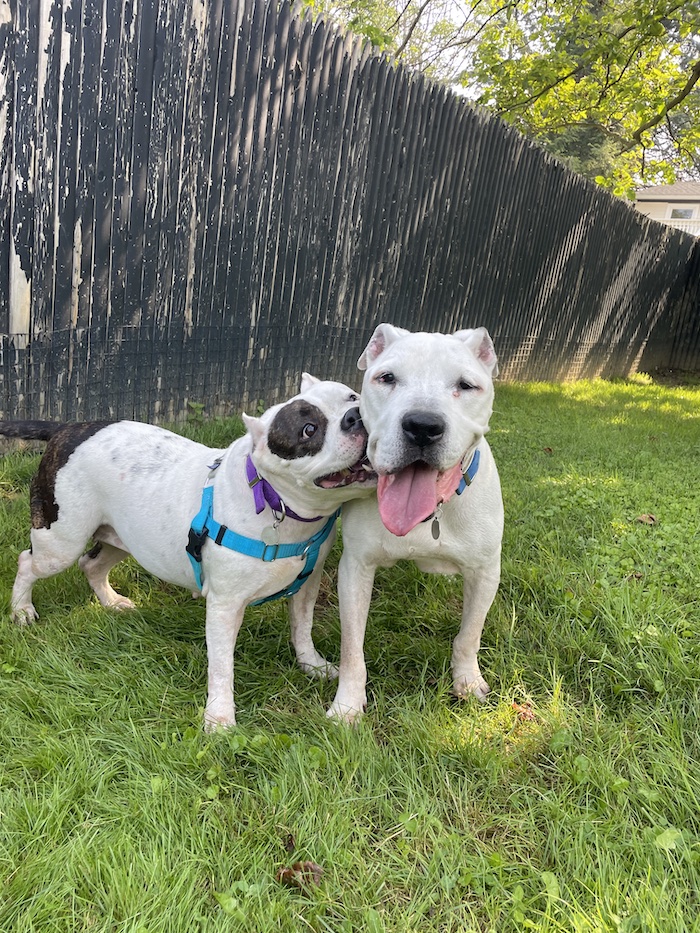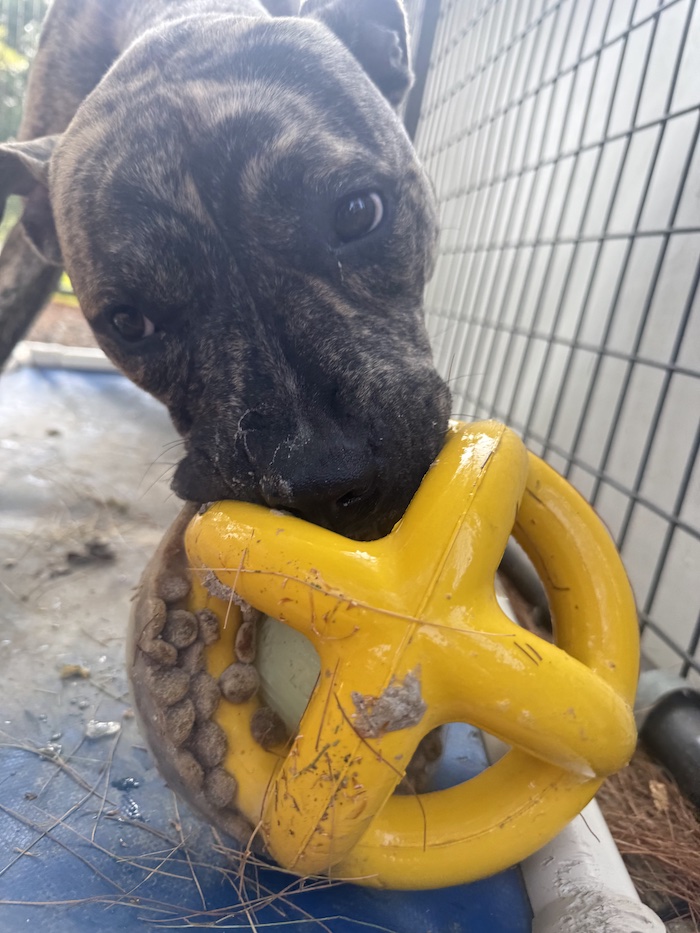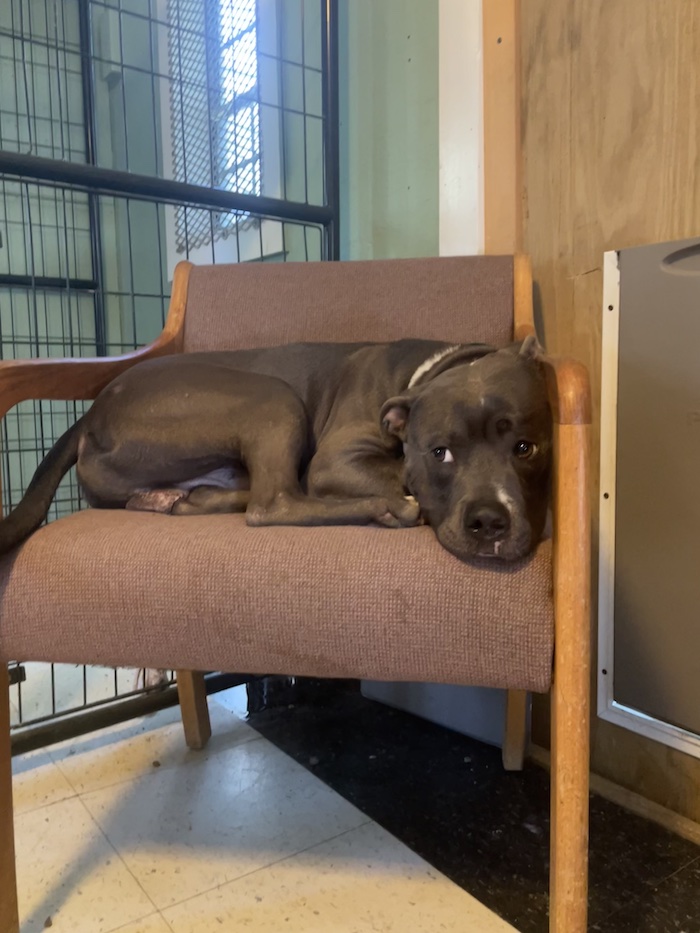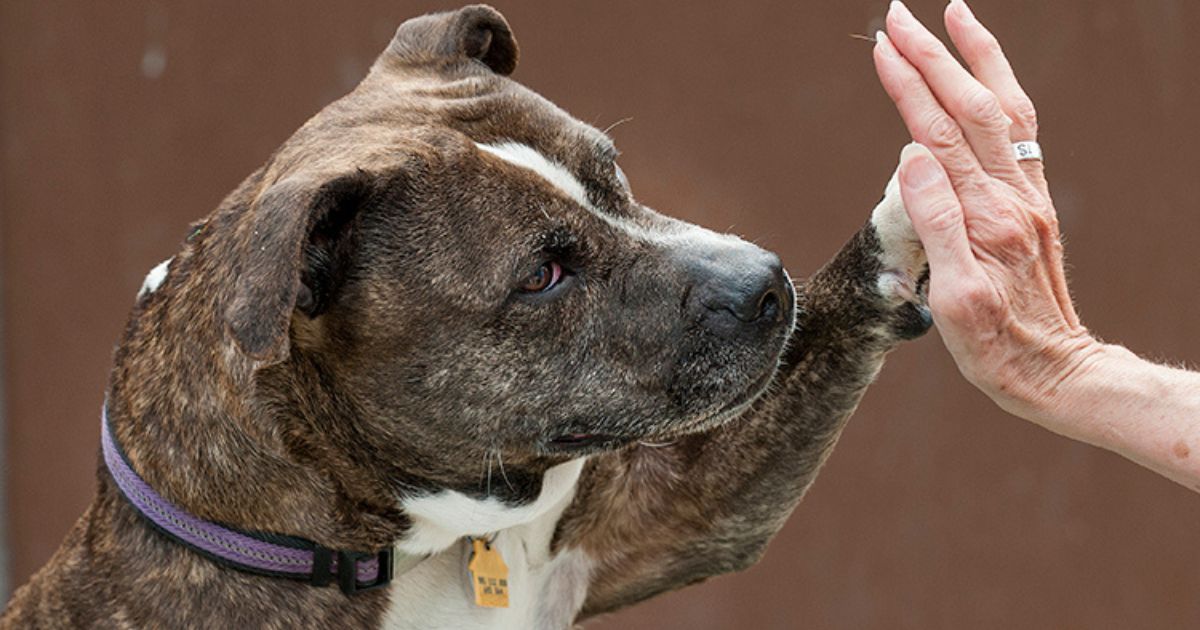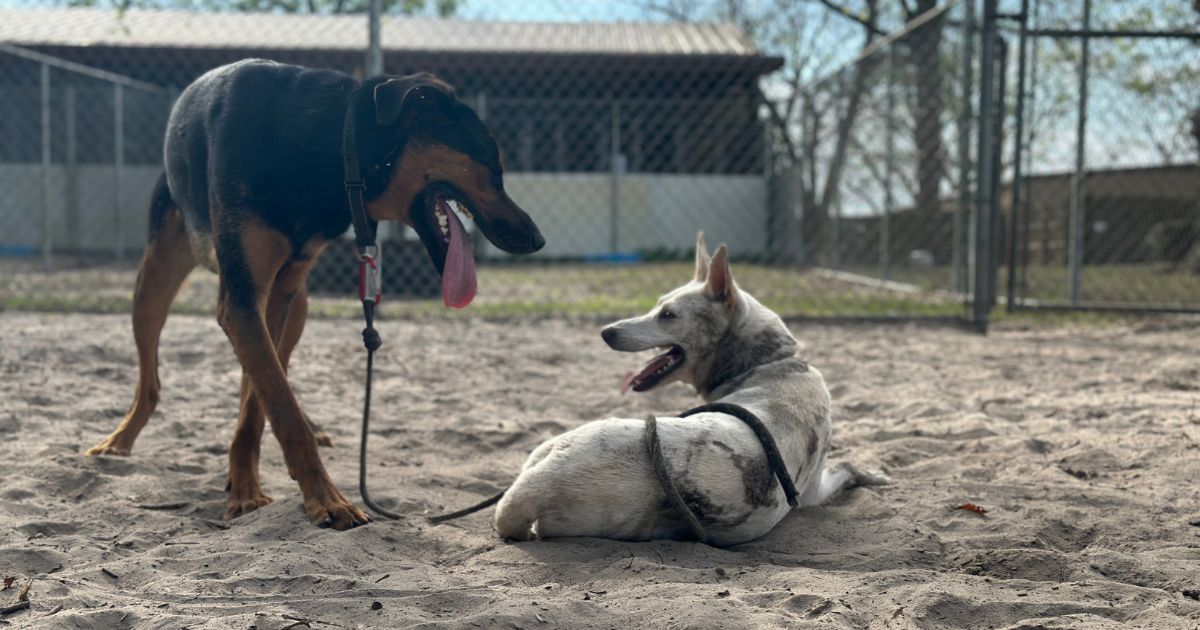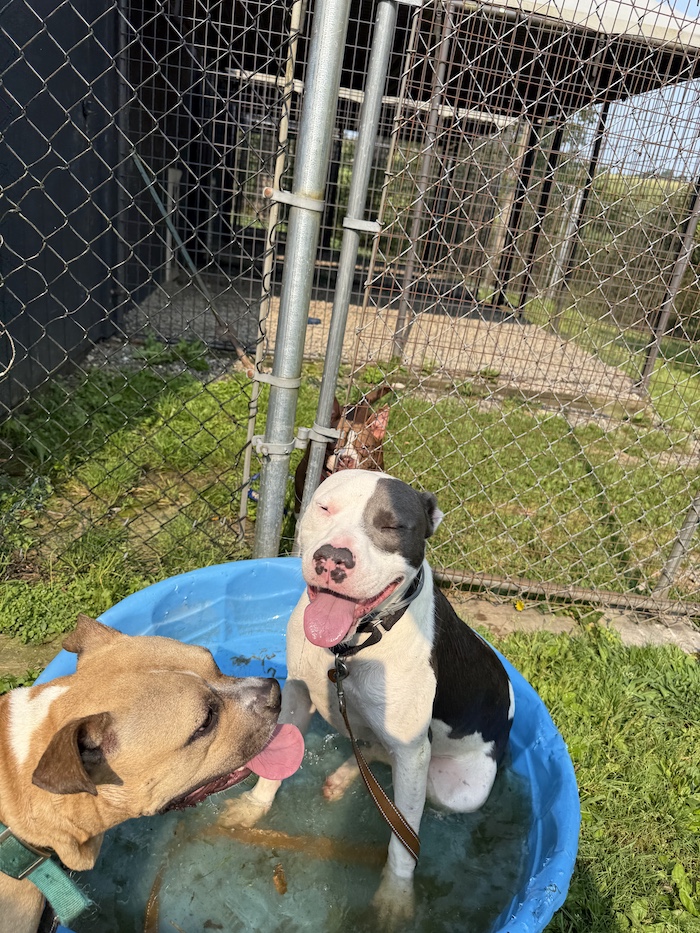
Every dog who enters a shelter is adjusting to a completely different environment. No matter how well-run a facility is, no matter how caring the staff or how thoughtfully designed the spaces, life there is simply different from home life. Different sounds, different smells, unfamiliar routines, unfamiliar people…everything that was once familiar has changed. While staff work hard to provide compassionate support, often in busy environments with many demands, this question looms: How do we help these dogs not just get through their stay, but actually feel comfortable and show their true selves to potential adopters?
The answer, it turns out, might be simpler than we think. Enrichment (those small moments of mental and physical engagement) can help dogs adjust more easily and reveal personalities that might otherwise stay hidden behind the stress of major life changes. Simple activities that take just 5-10 minutes can reduce stress, help dogs feel more settled, and make daily operations more effective for everyone involved.
Research shows that fifteen minutes of mental stimulation equals about an hour of walking in terms of engaging a dog’s mind, which further highlights the value of enrichment for busy, often underresourced shelters. Each simple effort helps dogs feel more settled while addressing their fundamental needs, and the possibilities are endless!
Working with what dogs need
Dogs experience the world through all five senses, and enrichment can be as simple as addressing some of those sensory needs:
- Smell: Dogs live in a world of scent, with their sense of smell being exponentially more powerful than our own. Lavender and chamomile can provide calming enrichment when diluted and added to bedding or towels, while exciting scents like cinnamon or ginger can provide mental stimulation. Even small changes to scent environments can help reduce fear, anxiety, and stress.
- Sound: Classical music helps dogs relax by lowering heart rate and reducing stress behaviors like barking, with long, slow sounds tending to decrease activity levels while short, rapid sounds tend to increase them. Auditory enrichment can include classical music, audiobooks, or even white noise to help mask sudden shelter sounds that might startle dogs. The key is consistency – playing calming sounds during predictable times like cleaning or quiet hours.
- Touch: Research found that dogs were calmer when given tactile enrichment, which can include different textures in kennels, gentle brushing, or appropriate human interaction. Incorporating tactile enrichment is possible through varied bedding textures, brushing sessions for dogs who enjoy them, and safe, appropriate human contact.
- Taste and Chewing: Frozen treats, puzzle feeders, and safe chew items address natural canine needs while providing mental stimulation. This category offers some of the most accessible enrichment options for shelters of all sizes and budgets – from simple frozen Kongs to scattered feeding that engages natural foraging behaviors.
- Sight: Use inexpensive barriers like shower curtains, plastic panels, or blankets for dogs who seem overstimulated. Fear Free emphasizes that for some dogs, creating visual barriers or quiet spaces where they can retreat from the activity around them is exactly what they need to feel more secure.
What this looks like in practice
Busy boxes: A cardboard box filled with crumpled paper and treats can transform a dog’s routine, with restlessness turning to focus as they engage their natural foraging instincts and problem-solving skills.
Frozen treats: On warm days, these provide both mental engagement and physical relief as dogs settle into calm, focused activities that engage multiple senses at once.
Quiet time: Sometimes the most helpful enrichment is giving a dog uninterrupted time to rest and decompress, perhaps with soft classical music or in a quiet office where someone is working.
Playgroups: These showcase individual personalities and social skills, and whether dogs are enjoying a kiddie pool or engaging in appropriate play, these interactions help potential adopters see their true personalities.
Natural exploration: A simple long line in an open grassy area gives dogs the chance to explore, sniff, and move naturally—behaviors that help them feel more comfortable and confident.
Building enrichment into daily operations
Starting points vary, but the key is to begin somewhere manageable. The most important thing is to start where it makes the most sense for your organization’s unique situation, remembering not to let “perfect be the enemy of good.”
To make an enrichment program sustainable, it’s important to work within existing routines rather than against them. When enrichment becomes part of tasks already happening, it’s more likely to stick around long-term. For instance, during cleaning routines, calming music can play in the background, creating a more peaceful environment for both dogs and staff without any extra effort.
And if volunteers are already walking dogs, they can build in time for sniffing and exploration, transforming a simple exercise session into a more sensory experience.
The reality is that truly impactful enrichment doesn’t require a big budget or specialized equipment. Sometimes the most effective enrichment comes from reimagining everyday items:
- Cardboard boxes headed for recycling become puzzle feeders.
- Kiddie pools from discount or dollar stores provide sensory experiences.
- Long training lines offer exploration opportunities.
For high-volume shelters where every minute counts, small modifications can have an even bigger impact:
- For dogs who are housed alone, scattering kibble instead of bowl feeding requires no extra time but transforms mealtime into mental stimulation
- Frozen treats can be prepared in batches during slower periods and distributed when needed
- Leverage community support. Local donors often respond enthusiastically to specific wish lists (and are often willing to crowd-fund things like freezers and feeding toys), and volunteers enjoy hands-on projects like preparing busy boxes or braiding tug toys

Research has shown that only 30 minutes of positive human interaction daily can dramatically change how dogs respond to stress. When resources are particularly limited or organizational changes feel daunting, focusing on increasing these positive human interactions (even in small increments) can be a powerful starting point that builds momentum for broader enrichment initiatives.
When these small moments of enrichment are woven into daily routines, the impact is undeniable. Dogs become more settled, show their personalities sooner, and are better prepared for life in a home.


